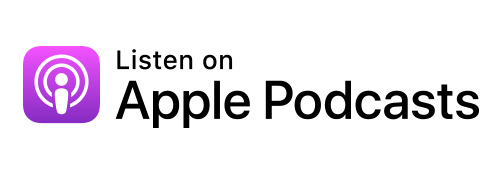 My guest for this podcast is Linda Wawrzyniak and she recently released a new book entitled “Million Dollar Adjustments: The Power of Small Changes on Performance, Productivity, and Peace.”
My guest for this podcast is Linda Wawrzyniak and she recently released a new book entitled “Million Dollar Adjustments: The Power of Small Changes on Performance, Productivity, and Peace.”
Linda’s book is designed to show that adjustment is one of the most treasured and powerful words and a defiite key to success. In my interview with her, we discuss about improving adjustment skill sets, timing and focus. As a consultant and educator for Major League Baseball (MLB) teams, this book is a product of Linda’s years of research and testing in professional baseball and has been a reference and guidebook for athletes to improve key relationships, increase confidence and improve performance.
In this book, Linda also introduced a tool called “The Adjustment Awareness Audit,” a great tool to help people understand their performance adjustment tendencies and plan their next move.
If you want to learn more about Linda, her new book “Million Dollar Adjustments” and her coaching programs, please click here to be directed to her website.
Thanks for listening and enjoy this interview!
THE BOOK
Based on years of research in professional baseball, this book shares the reason why the word “adjustment” is the key to success.
Everyone has desires placed on their hearts. Whether it’s succeeding at work, losing weight, completing education, or improving key relationships, the list goes on and on. To fulfill these desires, we tend to employ familiar tools that have worked for us in the past. But then life throws us a curveball—a job loss, performance analytics, relationship troubles, or a global pandemic—and we get stuck. We have to search for new ways and new tools to adjust to these changes. This book provides new answers based on the latest research so you can succeed at whatever you are aiming for!
THE AUTHOR
Linda Wawrzyniak knows the enormous impact even the smallest adjustments can have on improving performance  and increasing overall confidence and contentment. As a consultant and educator for Major League Baseball (MLB) teams, Linda began helping players navigate the challenges that come from acculturation and transition; at the same time, she also discovered the secret to improving their performance on the field. For the first time ever, she shares the secret of successful adjustments from within the closely guarded world of professional baseball. As a special bonus, the reader will have the opportunity to learn more about their own adjustment pattern tendencies through the Adjustment Awareness Audit, derived from the test used inside the MLB draft.
and increasing overall confidence and contentment. As a consultant and educator for Major League Baseball (MLB) teams, Linda began helping players navigate the challenges that come from acculturation and transition; at the same time, she also discovered the secret to improving their performance on the field. For the first time ever, she shares the secret of successful adjustments from within the closely guarded world of professional baseball. As a special bonus, the reader will have the opportunity to learn more about their own adjustment pattern tendencies through the Adjustment Awareness Audit, derived from the test used inside the MLB draft.
You may also refer to the transcripts below for the full transcription (not edited) of the interview.
Greg Voisen
Hi, this is Greg Voisen, with Inside Personal Growth, and joining me from South Bend, Indiana is Linda, and I want you to pronounce your own last name because I would probably mess this up. I should have asked you before we got on, but say it for us.
Linda Wawrzyniak
It's Wawrzyniak
Greg Voisen
And for all of you who are listening. It's spelled as W-a-w-r-z-y-n-I-a-k And the reality is, you probably were good that I asked you how to say Wawrzyniak. And if you want to learn more about Linda and her book, we're going to be talking about the million dollar adjustments. I'd like for you to go to Major League consulting.com. There, you can learn more about Linda, you can learn more about her consulting. And we will put a link to the book, Miller million dollar adjustments? Well, Linda, I'm going to let our listeners know something about you. Linda is developed the million dollar adjustment program, developing people inside of a corporate environment is an important activity because it's preparing them for specific skills they need to do their job. Well. Unlike regular schooling, corporate education is more focused on growth and improvement. In a real world setting. The learning is immediately executable on a day to day tasks. This means that people are in a consistent state of adjustment of applying what they know, to what they don't know, as well as what they are in the middle of learning. So that's the title of her book, million dollar adjustment. And she has spent much of her career and I'm going to let her tell that story, working with Major League Baseball players. And for those of you who are joining us on Zoom, you get to see the glove, the ball and the American flag, and a beautiful young lady speaking with us. So let's start this podcast off with this, you know when to set the stage for the interview, give the listeners a little context, for your book, tell the listeners a little about yourself. And really what has inspired you to want to write million dollar adjustment, because I think most listeners could probably figure out that, you know, if a batter gets up to bat, there's a certain percentage of them if they just adjust their swing a little bit. They're going to hit more home runs, right? Because that's been something that's been done, but you're actually kind of informing them how to go through that process. So tell us more about you and the book.
Linda Wawrzyniak
Okay, well, first of all, thank you, Greg, for having me. I really appreciate this time and your interest in in my work. So I started totally by accident and baseball, I obviously did not play Major League Baseball. But I got involved through the education of international players. At the time, Major League Baseball was bringing a lot of young men in from other countries and the they realized right away that the acculturation process was not easy. And so they needed some help. So they looked at it outside and found some people who not necessarily were had baseball background, but did have an education background and could teach. So I started kind of that way teaching some baseball players start out with like seven guys. And realize right away, there was no system, there was no infrastructure, no curriculum. And so I went on the process of developing it. And after a couple of years, just working with a few guys. I was invited to spring training, which was a big deal. So I went to spring training in Arizona, I didn't know what it really was, I had no idea walked into it felt like a real, you know, fish out of water, but walked around and met a lot of people really nice people and a coach came up to me at the time. And you know, he introduced himself said he really appreciated what I was doing. And so I asked him what he did. And he told me he was a former league, big league player. And now this was his first coaching job. And I was kind of surprised. So I just said, Well, what, what's been the biggest, you know, thing, the lesson that you've learned in baseball since you've been at the major league level, and now your coach, and what he said really surprised me. He said it was just basic that life was about patience and adjustments. And I did not expect him to say that. But it was so simple, and yet so profound. And at the time, I thought, Okay, that's interesting. I sort of tucked that away. But then as I went through baseball, listened to meetings, that word adjustment just kept coming up over and over and over again. And finally I said this is the key to success in the sport. This is the key to who makes it to the big leagues and who doesn't. So I need to figure out what this means. And so I went on this journey of unraveling that word, and really getting to the basic to the understanding of what makes Somebody have this, how does someone have it? Who has it? In? What quantities? What makes it? What makes? What are the elements of this word adjustment?
Greg Voisen
Well, it's interesting when you say that, you know, because whether you're an airline pilot, or you're somebody trekking a mountain adjustment is, is a very important thing, right? So if you're just off a small degree, and you're headed toward why, and I know you've heard this story, you're literally going to miss the islands completely. And it's those minor adjustments that believe it or not, now the planes that computers are making, the pilots aren't making, but the computers are. And in your case, it's these minor adjustments that you're making. And to kind of be at peace, I'd say a little bit more with every adjustment you make, and then allow it to become more of a habit. Now, in your chapter entitled face to face with failure, you mentioned, that adjustment is one of the most treasured and powerful words that you could have in our vocabulary. Can you speak with our listeners about the importance of introducing adjustments in our lives, not just the baseball players, but in our lives? And should the introduction be done in a step by step process? Or should it be all at once?
Linda Wawrzyniak
That's a great question. Well, adjustment is about grace and growth, also performance, and peace. So basically, it's the small things that we do to get us closer to our goal. And if you look at it that way, it frees us from being perfectionist and feeling that we have to have it all figured out right now. And I think that's what a lot of people feel, they, they put a lot of pressure on themselves to have it all figured out. And they don't realize that adjustments are expected, and they are important. And so basically, we will fail, we will fail at times. And we need to know how to navigate that failure. How do we give ourselves grace, and grow through that so that we can then perform once we know how to do that we have peace. So that's really why it's such a bohat like such a powerful word in our vocabulary. And each person will handle that a little differently, whether it's step by step or all at once, it kind of depends on what kind of adjuster you are.
Greg Voisen
Well, I think, um, you know, one of the statements, I've done a lot of interviews on spirituality, because this podcast genre, is personal growth, business, wellness, and spirituality. Those are all the books that come across my path. And I think one of the statements that Ram Dass said he was on the show, and many of my listeners know is but it's, it's be here now, you know, the more present you are right now, in the moment, the more you're going to learn, and the more you're going to realize that you can't blame yourself for something that happened yesterday. And you can't berate yourself for it. And at the same time, you don't know what tomorrow brings. So the you can get this tremendous focus by staying here now. And you can make those adjustments to have a better life by staying in this moment. I think that's important. And in chapter two, you define adjustment as a type of modification in how we do things built on five key elements, that you state, the five key elements work together in different ways, informing and inspiring individual behavior. So this is a behavior change when it comes to new situations, so I'm throwing something new. I have to adjust. Right, whether it's a curveball, and I never saw the curveball coming and attempts at the old ones. Can you briefly discuss the five elements of adjustment to the listeners? And how this would help them improve their lives? Whether it's baseball, or it's work, or family or home?
Linda Wawrzyniak
Absolutely, I think in, you know, we started to test, we've created a test so that we would actually have data driven information. And it's from this data that we defined and found these five elements. So I'm telling you, we define these based on what we saw in our testing. So the first one is beliefs. Beliefs, some people don't think you can test but in a weird way, it's based on subjective probability. Meaning that if you didn't succeed at something in the past, you probably won't think that you can succeed at it in the future. So that's your own subjectivity and your own probability. So and it works the other way too. So beliefs definitely play a part in our adjustment, how we make adjustments.
Greg Voisen
Can I ask you a question real quick there? They're not to not to throw you off because that's the first one beliefs. But you know, the subconscious mind is so powerful. It people have hardly ever think about reprogramming it. But within that subconscious mind are those beliefs about what we become? What would you tell people about, you know, because baseball players in particular, coming from all nationalities, all walks of lives, making it to the big times, right? Eye, and yet they're carrying these beliefs about themselves as somebody maybe who was core came from this area work their way up to get where they are. And those beliefs are very challenging to get rid off, and then they're thrust into this limelight situation, and a lot of them have a lot of problems adjusting. Yeah. So what would you tell about? I mean, if you were telling a baseball player to adjust his beliefs, and his subconscious, how would you recommend them kind of going about it?
Linda Wawrzyniak
One thing that we have found is that the belief element, really ties in with one other element can be one or two. So when you make an adjustment, or when you help them see the other elements, and suddenly through the testing, then suddenly they say, Oh, I see that I think I can do that. Or oh, you know, when you when you read, you have to explain to them, that belief is part of it. And you have to understand where their subjective probability is exactly why John Lester has the hips at times, he can't throw to first base. And that is a subjective probability that he has, in his mind probably looked at his stats and went, I don't think I can really do that I'm not going to risk it. So suddenly, you know, we carry these things around, do we risk or do we not risk based on our own beliefs. So once we start teaching some of the other elements, then that one starts to open up? So let me the, what one of them that we see has a huge immediate impact is internal timing. That's the other belief, or I'm sorry, the other element. That element is basically how we see time. And it has a lot to do with our central nervous system. It's not chronological time. It's our own internal timing. And one way that we kind of help people see this or understand this is through a very simple demonstration. So I can show you if you're interested,
Greg Voisen
Does it require that I stand up?
Linda Wawrzyniak
No, you don't have to stand up at all. Okay, all you do is tell me stop and start. That's all. So I'm going to ask you to I'm going to start, when you say start, I'm going to hit my stopwatch and when you think four seconds has passed to say, Stop.
Greg Voisen
Okay, start. Stop.
Linda Wawrzyniak
Okay, so that was 1.59.
Greg Voisen
I have not even have got half
Linda Wawrzyniak
So your internal timing runs faster? And so that's all it is. It's just how do we how do we what is our internal timing like? And so sometimes when we're in the middle of a task that comes into play so much, especially during a failure, or uncertainty, or anything else, we just have this that we have some people run fast, some people run slow, some people run just the same. It's very interesting once you see it, so if you have to, so when people are looking at their beliefs, we always look at their timing, because that definitely impacts their belief system. And the third…
Greg Voisen
How would How would me reacting so quickly affect my belief system? It's a great learning experience for the listeners, because I'm faster, yeah. Meaning faster,
Linda Wawrzyniak
You will probably form your beliefs quicker. And one way or the other?
Greg Voisen
And don't throw them away faster too?
Linda Wawrzyniak
Could be yes. Yeah. So that's usually your processing quicker. And so because of that, you're going to determine your subjective probability a lot faster.
Greg Voisen
But I think beliefs that are not serving one, right, we carry around beliefs that don't serve us. Yeah, that can be those are ones to get rid of or adjust as quickly as possible. You're talking about Million Dollar Adjustment, the million dollar adjustment is getting rid of beliefs that are not serving you.
Linda Wawrzyniak
Right. And I think when you when you are quicker, when we have quicker internal timing, it takes a little bit more to see whether or not that's going to shift or not.
Greg Voisen
So that's number two. We've gotten there. We have three more to go.
Linda Wawrzyniak
I'll make these quick. The third one is strategic action, which can be either offensive or defensive. All that means is we're going to initiate it or someone else is going to initiate it. So the fourth one is information synthesis. It's a real nerdy way of saying how much do we see in our inbox? meant, and how can we use that to make a better adjustment?
Greg Voisen
And the last I have to do with the reticular activating system?
Linda Wawrzyniak
Yes, actually it does.
Greg Voisen
Yes, yeah.
Linda Wawrzyniak
And then one is knowledge. So how do we, how do we actually what do we need to know? What do we know? And what do we need to know in order to make an adjustment?
Greg Voisen
Very good. And I think I think for our listeners that, you know, this podcast, if all they did was learn those five steps, they could really make the adjustments, and it's so close in. And by the way, I just need to say this about you, she distilled it down into something so simple, doesn't have to be that complicated. So if you look at those steps, where you repeat those steps, please quickly for the listeners,
Linda Wawrzyniak
Beliefs, internal timing, strategic actions, information, synthesis, and knowledge.
Greg Voisen
It's beautiful. It's, it's wonderful. Now, in your chapter three, you speak about COVID 19 pandemic, and the adjustments that were brought about, and the new normal. And now as of this morning, Pfizer has a pill that's going to be 89%. effective at preventing death. Right. So now we're starting seeing a huge waning, I've been listening to it this morning, big news, news. So in different aspects, like technology, food, music, transportation, and more, you also speak about the relation of adjustment patterns in the transformation that happened, right as a result of COVID. And it's not that we're still not dealing with it. Hopefully, we won't be dealing with it at all much longer. What are the benefits of knowing your adjustment patterns? And as you say, kind of at the height of COVID-19, you know, some of this stuff is going to start to shift now. And I think we were all thinking, Oh, we're in this for years, or maybe we won't be, which would be good. People will get to go back to baseball games and sit in stands and have a beer and a hot dog and enjoy it.
Linda Wawrzyniak
Yeah, that would be nice. I think every looking forward to that. Yeah. Well, you know, COVID-19 is a big shift in and like we talked about do mention like disruptors and drivers. And I would say that it was kind of a disrupter. And it's also been a driver. So people are who are trying to make sense of it all. This is where knowing your adjustment pattern makes a big difference. So let me give you an example. If you are a maverick, so based on our test, and how people scored, we ran, we built lots of algorithms. And we looked at a lot of different things. And we came up with seven basic patterns. There are more and there are nuances. But overall, they're seven, and then we gave them some fun baseball names, because why not wear a baseball. So the Maverick is someone who basically is not afraid they, they they're very driven to succeed, not afraid to succeed. But if there's a slight failure, or a huge uncertainty in the road, they might have some doubt. And that might creep into the way they adjust to the situation. And it might impact their performance. So you throw the curveball of COVID-19 to a maverick. And at first they're going to say, oh, yeah, that's no, you know, that's fine. I'm going to work through that we're going to get through that that's no big deal, blah, blah, you move forward. But then maybe something happens where they see like hospital numbers, or they have someone they know who, who doesn't do well through it. And suddenly, there's doubt or maybe they get it, who knows. And so now that can affect the way they're going to make adjustments going forward. So it has a lot to do with adjustment pattern, whereas maybe a steady Eddy is going to say, Well, I'm just going to do it the way I always do it. I've always kind of worked through it this way. And I'm just going to work through to the same thing this way. So it's very fascinating. When you look at the seven different types of patterns and how people have responded to this. It really follows the same, the same path and the same patterns.
Greg Voisen
So well people can take this assessment at your website, and is it no cost? They want to do the assessment, or am I right or am I wrong?
Linda Wawrzyniak
So in the book, there's actually a free inside the book. There's a it's called an audit. It's a derivative of the one we do in Major League Baseball. Okay, and the reason that the one we do in baseball is because this is a text and the one we do is that a pencil paper based test. So this is as close as you're going to get to the actual test. If you want to take the actual test, then you'd have to schedule for it on the website. It's a it's the one that's used inside the draft in Major League Baseball. So there is a cost with it. Yes.
Greg Voisen
Okay. And what is the cost of my listeners want to do that?
Linda Wawrzyniak
currently the cost is 125. Affordable.
Greg Voisen
Yeah, very affordable. I mean, so you can go to a website and contactor and then you basically can take the test or you can buy the book for whatever it's being sold at Amazon, and take the test yourself in the back of the book. So, if you're going to do it, the books probably going to be a lot cheaper. Yeah. Of course, you know, you know, it's, it's really interesting to see how you related this to baseball, and how, you know, our performance is affected by being resistant to adjustment. And you get a lot of people that are resistant. And I don't know, if you figured out I was a maverick, because you kept talking about a maverick, I've always been a maverick. But I'm also the kind of person that probably lets stuff drop off quicker, and is not as affected by it. Because I've moved forward, I've kind of been a serial entrepreneur. And it doesn't mean it doesn't affect you psychologically, but you're constantly making adjustments. Okay. And in chapter four, entitled, your personal adjustment tendencies, you share the adjustment awareness audit is a great tool, which is what you were just talking about, to help people understand their performance adjustment tendencies. And to make their plan to the next move. Speak with us, if you would. And if there's any more you want to add than what you've already said about the test, you know, if I take this test, and I do and I do it out of the book, what's it going to do for me? What should I pay attention to? And if I was listening right now, and I wanted to spend $125, why would I spend $125, to go get the test?
Linda Wawrzyniak
The difference really is, the audit tool gives you a close idea of your tendencies, it's based on looking at the different patterns and how this one could be closest to the seven. However, if you have a nuance, or you have something, sometimes people see that there could be one or two different types, they're not exactly sure, then at that point, they might want to go and take the actual test, and maybe get a little bit more breakdown a little bit more information on okay, this is actually where I'm at now, the book also talks about that you can train it your adjustment pattern for optimization. So if you're not 100% sure that you're here or here, you might and you have something important that you're trading for, you might want to go the next step, if you're just doing it for general information, it probably won't matter. But it really depends on your goals and how fast you're trying to get to a specific goal. And how big that goal is. So maybe it does matter, just depending on those things.
Greg Voisen
So you've got a chapter about making better adjustments. We've talked about adjustments, now we're talking about better adjustments. And obviously, you can continue to fine tune it's like a dial on the radio, you know, we say they're static, and how you get the static out, I might be talking about the olden days. But their habit is that this is like fine tuning, fine tuning, fine tuning. It's like the adjustment you make to a piano when it's in tune, you know, when it's in tune, and when it's out of tune. And we state that our internal clocks shapes the way we perceive time, rhythm. Coordination, is largely controlled by the brains pulses carried by the nervous system totally got it. And the patterns of behavior we developed over time. So we're carrying stuff that's happened. And we either chose to keep that belief or that set something up, because there's people that have PTSD. You know, you get PTSD as a result from having a traumatic, something happen. And then it keeps replaying because the wiring and firing in the brain is going something triggers it and boom, it's there. Right? What advice do you give our listeners about controlling our internal clock for better focus?
Linda Wawrzyniak
So I'm working with a several young men right now. But they we see a lot of the times that we either overthink something, or we under think it. And when you combine that with an action, it can be a huge success or a huge failure, or maybe it's not as great as what you want it to be. So our brains can either help us or hinder us in the process of what we're trying to do. So by focusing on time, see, we're trained as a society to focus so much on data information, just that we have overloaded, that's what we're focused on. But when you kind of shift and start telling people focus a little bit more on your time, that's new, because we're saying what, wait a minute, what do you mean, yeah, that is going to impact how you use this data, how you use this information, whatever it is that whatever visuals, information or inputs that you're getting, when you start focusing on time versus the amount of information, suddenly there's an execution difference. And that's the difference between leadership and many other things goal set, you know, reaching goals, succeeding in what you're doing. Because time we don't we have learned how to drown out time. And unfortunately, that is to our detriment. Because it really does. There's a beat to how we do things or rhythm to how we do things, and we don't know it anymore. We've lost touch with it. When you gain it back, suddenly, this whole thing opens up. I see it all the time. When I work with people, it's like, so fun to watch the change, because suddenly they go, Oh, now I get it. Now I need to focus on my filming as I do this. And so yeah,
Greg Voisen
They always say that it's in the timing. Right. Yeah. And it's interesting story, because there's a duality about time. There's, you know, I think you bringing up the point to be focused on time is important. And here's a story that I think, a little story that would kind of it correlates. So these Buddhist monks used to come and went to these meditation retreats, and they'd ask them, Well, what is it that you want? Because they'd come over from Asia? And literally, they would say, well, we would like to get a watch. A watch. You know, a watch. You're like, you guys never have had watches. Why is it that you want to watch? Well, they heard that there were watches here in the US. And they have a skeleton at the end of the bed with it, they sleep in, and then they have a watch. And they said, Well, why do you want to watch because you guys aren't so focused on time. And they'll go, that's not true. We're focused on how much time we have left. Interesting. That I was, I was, it's like, the clock is ticking. And it's like, we don't have much time left. So we've got to get these things done. Right. So, you know, I thought, and I was just thinking about that, because it popped in my head when you said, the timing. And I'm thinking, here I am at this meditation retreat, these Buddhist monk, topless monks? And they're saying, I want to get a watch. And you're like, what do you want to watch for? So I can keep track of the time? Not the time that's passed? The amount of time I have left?
Linda Wawrzyniak
Yeah, that's fascinating. Yeah, it is. It's like that. That's actually quite interesting story, because I had always picture them more present minded, but that always shows them more future minded, right?
Greg Voisen
Well, they're there. They're focused on actually the watches a reminder, they use it as a not so much they wear it, they actually hang it on the bed post. It's a reminder, it's a symbol of what is left, you know, what, what did we do today? And how much time is left? Not what past? Right? You know, it wasn't about oh, well, eight hours has gone by today, blah, blah, blah, blah, blah. It's like, okay, it's reminding the future.
Linda Wawrzyniak
True. Yeah, that's right. Well, we don't none of us really know how much time I have. Not for the point, right. But yeah, make the best of the moment that you have.
Greg Voisen
And most of us are looking at a timepiece. I know, I've had this apple watch for a long time and you get a timepiece. Yeah. And you say, Well, so what is it that clock that's over there is reminding me of how much time has transpired? Not how much time always is left?
Linda Wawrzyniak
That's true. That's true.
Greg Voisen
Because we're looking at the past saying, well, it's 1035 right now. And Linda and I have been on this call for 35 minutes, right, hypothetically, but you know, it, if you think about it in reverse, it's really quite, there's quite a duality, when you start looking at time. And I think your part about focusing on that internal clock is so important. Yeah, if you would mention that we'd had over 10 years of research you said and testing and this, and trials and errors. And can you show the listeners the best piece of advice given to you while you were writing the book, because you did all this research, right? 10 years of research, putting all this stuff together, then putting it in this book, and then conveying this message through this book. So what did you learn?
Linda Wawrzyniak
You know, I was told that to keep it general enough so that you can take what you've learned in research and anybody can use it. And that's what I really attempted to do it. It isn't that easy, to be honest to do that. So I've had to really think through and write and kind of rewrite how Can I make this so that it is general enough, but you can see that that's backed by a lot of research and data. So that's really, that was really a challenge for me. But that was the advice I was given. And I think it's great advice, because there's only a small portion of the population that really wants to know this in super big detail. Most of us just want our lives to be to move in a positive direction, and to be fulfilling and to do things for others. So how can we do that? Well, we all need to know how to make better adjustments. So that that is what my goal was. And I thought that was a great piece of advice. Give as much backing that makes people understand the basics, but make it general enough for everybody. So hopefully, I've done that.
Greg Voisen
You have and I think, you know that. For our listeners, adjustments is a word that's probably overlooked. You know, when you look at this book, The million dollar adjustment? It's like it you're like looking at it going the title? What is the million dollar adjustment? Right? And in even if you took the million dollar part out of it, yeah. And you just said, Life adjustments? Oh, you know, it has a significant meaning for those that are going like, what do I adjustments because we're adjusting every day something's changing. We're, we're moving with what needs to be adjusted, right?
Linda Wawrzyniak
So like, linear, that's for sure.
Greg Voisen
Yeah, totally. not linear. Not. Now, you tell a story, a heartfelt story in the book about Jordan. And, and, and Nat and her husband? Yes. Working through intense grief when they lost two pregnancies back to back. What did this experience teach you about life adjustments as you state in the book, because those are the adjustments we're all dealing with every day, whether it's one pregnancy, two pregnancies, it's somebody who gets sick in our life, it's a child who needs care, it's somebody with PTSD doesn't matter when somebody's lost all their finances, whatever, those things are happening all around us all day. And what did that teach you this this that both pregnancies ended in termination?
Linda Wawrzyniak
Well, first of all, it was such a difficult time. But I I think the biggest thing it taught me was and I had never experienced that personally. So I think any, any woman who's ever experienced pregnancy loss is a rockstar to watch your child lose their child is heart wrenching as a parent, and I don't wish that on anybody. And to and for anyone else that has ever been through that experience. They do it so low, it's they're so lonely in that there isn't a lot of support. So I would like to say that I think any woman that's ever been through that as a rock star, because it is definitely not easy. So luckily, I had tested my daughter, because when I was doing the test the research of all this, I tested my whole family and everybody who I could get my hands on, just for validation. And I found out that my daughter is also a maverick. And so because of that, I knew that when I see her loss, she looked at there's there was multiple layers of loss. And sometimes we just as it comes, we go, that's what happened. But in her case, she also saw it as failure. And so I could, I could understand that because I understand failure very well. Because baseball is a game of failure. And so for me, I tapped into you know how to help her besides being there crying with her loving on her and her husband, there were other things too. And that was that if she's a maverick, then that means that, you know, she talked about failure when she could start talking about she felt like a failure. Again, subjective probability wasn't just one loss that was to last as well. That's how it's going to be probably forever, right? There was this whole subjective probability thing happening. And so really working through that and I and her timing basically stopped and she's a very high energy person. But her timing really stopped. She was heartbroken. And that's what loss and all that can do. So we have to start with the belief system and that in the timing in those situations, we have to work on that. So for her, I told her just do one normal thing a day, just one normal thing a day because we get that timing going again, you know.
Greg Voisen
Well losing a child childbirth like that not once twice, is devastating. But for both the father and the mother a quite a depressing situation depressing meaning, you know, you see many women fall into deep depression. And whether it's counseling, or some of the best thing that can be done is obviously getting them. Because I think they stopped just like what you said, is getting them moving. Right? Whether it's yoga, or it's running, or it's whatever it is, the when the bodies in motion like that, especially for a maverick, and I can speak highly to that. Your sense of creativity starts again, and a child is actually created as a result of creativity. It's a beautiful union, to come together and create a child and basically have that creativity, right. And so, you know, I know it because I've been there, I've been through those bouts being a maverick, so I know what it's like. And I would say, if anything, there's one thing to keep focused on is, how do you highly charge somebody like that, to stay in the creative zone, whether it's a creative outlet through writing, painting, jogging, exercising, doesn't matter what it is, but find the avenues and the outlets, because it then takes your mind off of the loss.
Linda Wawrzyniak
We talked about that. That's the chapter that we talked about a story of when we're talking about joy, because we have to find joy in moments of loss. And it's not easy to do, because you don't feel joyful at all. Because joy, you know, by joy can reset your timing also. And we need to be understanding joy. So I talk about that a lot. Because we need that for our timing, it really keeps our timing in balance. So
Greg Voisen
Yeah, I mean, you know, through this pandemic, you were talking about it earlier on, you know, I lost two brothers not to COVID this last year, and I lost two very good friend. And, you know, there's nothing like finitude to give you a perspective about being here now and being focused. And whatever it is you're trying to accomplish. So your book really points out some very important points that people not only need to be reminded of, because I think they easily forget. And to apply those steps in those steps that you have are so valid. So Linda, if you were to leave the listeners with three key takeaways from our book, A your book, I should say. And I did right the way I said our book, what would they be? And how can you tell them to apply them? What? What advice would you give? What teaching advice would you give about applying them?
Linda Wawrzyniak
The first one is, I think that life is always going to throw you a curveball, so you better prepare for it. Now, why wait until you the curveballs right in front of your face, and start preparing practice through the adjustment processes and prepare, so you can have peace, and that kind of the second one is that no matter what kind of adjuster you are, or maybe you find out that you are through this book, you can improve it and we can have joy and peace. So there's always ways to train that adjustment skill set. And whether that's in you or someone else, it's something that we should always be trying to do. I think the last one is that it's okay to say no to adjustments that you don't feel are right for you. And I talked about that in the chapters or in the book too, because sometimes we come up against a change or something that we an uncertainty that we aren't okay with. So for whatever reason, and those are talked about in the book, the five apps, so just if that's if that happens, sometimes we have to draw a line on adjustment and that's okay.
Greg Voisen
Well, you've summarized it very well. And I think for our listeners, just to let him know, I want to repeat this again, go to Major League consulting.com. To learn more about Lynda and the book, there will be a link to the book on Amazon so you obviously can get the Kindle version or the paperback version of the book. And the test you need to contact Linda through the contact information there and or take the test or assessment just from the book itself. Linda, it's been a pleasure having you on from now. Hopefully I don't mess this up South Bend Indiana, north and south from South Bend Indiana, to you two very close to Notre Dame, which is very important for me To my listeners to know, because Notre Dame is a stone's throw from where she is, I'm sure. Is it? Yes. Yes, exactly. Blessings to you, thank you for being on inside personal growth. Thanks for taking the time to impart your wisdom. And the years that you've spent studying this and then applying it to major league players, major minor league, it doesn't matter who they are applying it out to people. And I would just get from this conversation that, you know, based on the kind of players you've been working with, and the kind of sometimes egos that are out there, that this material is just so valid for them. So thanks for bringing it to them so they can make adjustments. Really, maybe not as much professionally, but personally, so they can have better coping skills.
Linda Wawrzyniak
I love those guys. They're like my son, so I'm sure they are. Yeah, yeah. So anything we can do to help them succeed. That's, that's what I want to do. So I'm pretty…
Greg Voisen
Good for you. Thank you for the work you're doing and thanks for being on the show.
Linda Wawrzyniak
Thanks. Great to spend the time with you and have a great weekend.
Transcribed by https://otter.ai
Sign up to receive email updates
Enter your name and email address below and I'll send you periodic updates about the podcast.











Leave a Reply